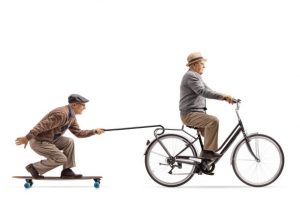We’ll talk about skateboarding – not just skateboard flips, skateboard rides, and skateboard kicks but the rich evolution of skateboarding.

Key Takeaways
- It’s mesmerizing to delve into the fascinating journey of how the first humble skateboards transformed from wooden planks on wheels into a thriving global enterprise as skateboard companies (like Santa Cruz )take advantage of the sport. From its humble beginnings in the streets of California to its present-day status as a multi-billion dollar market, this article takes a deep dive into the pivotal moments, cultural shifts, and innovative trends that have shaped the skateboarding industry into what it is today and the skateboard companies contribution to its rise.
- We’ll be exploring the roots of skateboarding and why skateboarders love it, tracing it back to when it was simply a fun distraction for surfers on land, to the creation of urethane wheels by Cadillac Wheels, and how these innovations led to the growth of skateboard companies and the International Association of Skateboard Companies (IASC).
- We’ll witness the evolution of board design as innovators push boundaries to shape what we now recognize as modern skateboards (from vintage to punk rock designs). From pivotal moments that changed the game forever to key players who’ve left an indelible mark on this industry, we’ll explore it all.
- But more than just a sport or hobby, skateboarding, with its popular appeal and new street tricks, has profoundly shaped our culture in ways few other activities or pursuits have managed to do. Skaters, through their creativity and dedication, continue to influence and redefine the skating boundaries of what’s possible in modern skateboarding including creating new tricks.
- As we look towards the future and ponder where this dynamic skating enterprise is heading next, join us in appreciating how far it’s come. It’s not just about business; it’s about passion and serving others through a shared love for this incredible board sport.
How Street Skateboarding Began
Skateboarding is a unique, artful sport rooted in 1950s surf culture in California. Surfers at the time were looking for a way to ‘surf the sidewalks’ when the waves were flat, and thus, pioneer skateboarders crafted and developed the sport through their innovative skateboarding inventions. The first skateboard was made with wooden skateboarding boxes with roller skate wheels attached, letting people become asphalt surfers. Thus, the birth of skateboarders
Board Design Evolution: From Roller Skate Wheels To Modern Marvels
- The skate deck industry has come a long way according to the history of skateboarding, transforming in design to reflect the day’s culture and lifestyle of its ever-changing skateboarding community. Material innovation made it possible for boards to shift from wooden to more durable materials such as plastic and fiberglass, while larger wheels enabled better control and speed.
- The skateboard wheel industry also underwent many changes throughout the history of skateboarding, from clay wheels used for roller skating to urethane wheels created by Cadillac Wheels.
- The first official skate or skateboard was sold in the 1950s, and it’s come a long way since then. Professional skaters in the industry and their new skate tricks have also come a long way since the skate park began gaining popularity, with the rise of vertical skate ramps and other manmade skate structures. Still, they are popular in Hermosa Beach too.
- It’s safe to say that skating maintained its impact throughout the skating years.

Key Moments In Skateboarding History
As we journey through the annals of the history of skateboarding, let’s pause to discuss two pivotal periods: the rise and fall of the 1970s street skateboarding craze and its exhilarating resurgence in the 1980s through magazine publications that lasted until the skateboarding era of the 1990s.
- The origins of skateboarding are marked by pivotal events that shaped its evolution into an extreme sport. The introduction of roller skate trucks by Roller Derby released in Surf Guide Magazine (a skateboarding magazine), completely revolutionized skateboarding, leading to the creation of the first self-produced skateboards.
- Notably, skateboarding reached Germany with the establishment of the first German skateboard center and the hosting of the first German skateboard championships, significantly boosting the skateboarding scene. This new period also saw the emergence of the first skate videos and skateboarding magazine publications like Quarterly Skateboarder, the Skateboarder Magazine, and Transworld Skateboarding.
- We’ve all heard about how wildly popular skateboarding became in the ’70s, only to crash almost as abruptly as it rose. And yet, against the odds, this resilient skateboarding Hall of Fame sport bounced back in the ’80s with a passion that was nothing short of inspiring.
The Craze Of The 1970s
Skateboarding’s popularity skyrocketed in the mid-1970s, only to plummet just as quickly, a rapid rise and fall that forever shaped the skating industry. During this time, this era is remembered for its street skateboarding fashion trends, the emergence of celebrities to promote skateboarding, and the unexpected skateboarding downturn that left us disheartened but not defeated in the industry.
The skateboarding industry and contemporary skateboarding experienced a resurgence in the 1980s until the late mid-1990s. It took long before the skating industry recovered and reached underground popularity.
- The skating history of the early 1970s craze was characterized by its skating boards, skating shoes, skating apparel, skating celebrities, punk rock music, and skating or skateboarding hall events.
- Skaters of this era in history embraced the lifestyle, pushing the boundaries of what was possible on a board.
- This era saw the birth of iconic skate brands, shoe companies, and skate shops. The International Association of Skateboard Companies (IASC), which includes brands like Santa Cruz and Vans, makes skateboarding more prominent and allows people to love it even more and buy from their favorite shops.
- Prominent skate brands include Powell Peralta (founded by George Powell and Stacy Peralta) and Santa Cruz in the skating industry era in the history of skateboarding.
- This point in the history of skateboarding also marked the rise of legendary Hall of Fame skaters like Tony Hawk and Rodney Mullen.
The 1970s skateboarding craze also marked the emergence of early skateboarding competitions, the first skateboarding magazine publications, and skateboarding videos – all of which helped to propel the sport to new heights. At the time, you could buy skating magazines or skateboarding magazines and skating sports equipment at your local surf shop. A surf shop is a popular go-to place for skateboarders before.
This was also when the first skate park venues and skateboarding exhibitions began gaining popularity and becoming part of the Hall of Fame. In fact, the first artificially created skate park opened in 1976. Although the craze eventually faded, the legacy of skateboarding remains, inspiring both seasoned and aspiring street skaters to this day.
Skateboard Resurgence In The 1980s
You might recall the 80s as a time of neon colors and big hair, but for those in the skating world, it was a period of rebirth and innovation.
- The influence of 1980s fashion trends and celebrity endorsements rekindled interest in street skateboarding and laid the groundwork for the resurgence of both boy and girl skateboards and the entire skateboarding industry.
- The 1980s also saw the start of the biggest international skateboarding competitions promoted by brands like Powell Peralta (founded by George Powell and Stacy Peralta) and Santa Cruz which skyrocketed all through the 1990s skateboarding era.
We will look at how skating celebrity endorsements, professional skateboarders or skaters, skate videos, and competitive surfing skateboard or skateboarding hall events started to popularize skateboarding and spurred its growth through the years.

Key Longboard Figures
Let’s dive into the world of skateboarding and meet some of its major players who’ve shaped this thrilling sport. We’ll explore skateboarding sponsorship dynamics, uncovering how skateboard companies like Vans, Nike, Adidas, and DC influence the sport. Key Hall of Fame figures like Tony Hawk, Bob Burnquist, Steve Caballero, Ryan Sheckler, and other professional skateboard enthusiasts have played crucial roles in shaping skateboarding’s image and popularity.
The same goes for popular skate teams like Flip Skateboards. Skateboarding brands such as Powell Peralta (founded by George Powell and Stacy Peralta) and Santa Cruz, manufacturers, and even skating athletes have all contributed to the vibrant culture surrounding street skateboarding.
Impact Of The Culture
The skateboarding culture has had a profound influence not only in sports, but also in fashion, music, and street art. Its street fashion impact has redefined urban wear, while its media presence has shaped our views on alternative lifestyles. With FamilyHype, we hope to understand street skating culture better.

The Future Of Skating For Beginners
As we look ahead into the future of skateboarding, we at FamilyHype are enthusiastic about serving others in navigating this dynamic landscape.
- Technological advancements and innovative designs are continuing to redefine the sport, making skateboarding more accessible and exciting for all.
- With the surge in global interest, market expansion is inevitable. As skateboarding technology continues to push boundaries, we can expect an increase in skateboard use and accessibility.
- Skateboard retailers, skateboarding magazine publications, manufacturers, and brands are all essential entities in the enterprise, with skateboard accessories and safety gear playing an important role as well.
- Additionally, the skateboarding community, culture, and events all contribute to the vibrant skateboarding culture.

Conclusion: The Colorful Past Of Skating
We’ve journeyed through the vibrant past of skateboarding, marveling at its evolution and impact. We owe so much to those pioneers who launched this culture. As we look forward, let’s keep pushing boundaries and embracing the spirit of skateboarding. Skateboarders, retailers, manufacturers, professional longboarder competitions, skateboarding events, and skateboarder magazine publishers have all played a vital role in the growth of the skateboarding culture. With longboards, components, decks, trucks, and wheels, the possibilities are endless.
Frequently Asked Questions (FAQs):
Is Riding Longboard A Growing Sport?
Yes, skateboarding has experienced growth and increased recognition as a sport, especially with its inclusion in major competitions like Street League Skateboarding and the World Olympic Games.
How Is Riding A Board Different From Other Sports?
Skateboarding differentiates itself by blending athleticism with artistic expression. It emphasizes creativity, individual style, and a connection to urban culture, setting skating apart from traditional sports.
Where Is The Birthplace Of Longboards?
Skateboarding’s birthplace is often attributed to Southern California, particularly surfers in places like Hermosa beach, Venice Beach and Santa Monica, where the sport’s early evolution took place.
What Are The Origins Of Skateboards?
The origins of the skateboarding industry date back to the 1940s and 1950s when surfers in California attached roller skate wheels to wooden planks as a way to replicate the feeling of riding waves on land. Over the decades since the 1950s, skateboarding evolved, gaining popularity in the mid-1970s, experiencing skating ups and downs, and eventually becoming a global skating sport and cultural phenomenon. Skating come a long way from a wooden crate wheel attached to roller derby wheels and is now a huge part of mainstream skating culture. You can learn more about the sport’s rich history by checking out publications like Transworld Skateboarding and Skateboarder Magazine Archives.
How Did The Sport Evolve Over The Years?
The evolution of the skateboarding industry from a simple pastime in the mid-20th century to the diverse and dynamic skateboarding subculture it is today is accompanied by the development of new tricks, vert skateboarding, skate parks, skating equipment, and a dedicated skating community. It is now recognized as much more than just a professional sport and recreational activity. Skating is fun. Check out the Skateboarder Magazine Archives to learn more.
What Was Skateboard Riding First Known As?
According to the history of skateboarding, the sport was first known as “sidewalk surfing” due to its initial resemblance to the act of surfing on paved surfaces.
Can Street Skating Be A Career?
Yes, skateboarding can be a career for skilled athletes who excel in competitions, receive skating sponsorship deals, endorse products, and participate in media projects.
Is Skating An Olympic Sport?
Yes, skateboarding became an Olympic skating sport, making its debut at the 2021 Tokyo Summer Olympics, highlighting its ascent as a recognized and respected skating athletic endeavor.
What Are The Most Common Skateboard Injuries?
Common skateboarding injuries include fractures, sprains, strains, and contusions due to falls, collisions, and high-impact maneuvers. Wrist, ankle, and head injuries are among the most prevalent. Like all extreme sports, wearing protective gear while skateboarding can help mitigate these risks.
How Popular Are Longboards?
Skateboarding has always been a sport before. If you’ve read some skateboarding magazines, you will discover big names and people who created freestyle and pro tricks like Tony Alva, Alan Gelfand, Frank Nasworthy, and Larry Stevenson, a popular skateboarder who is part of the Skateboarding Hall of Fame. League skateboarding has grown in popularity over the years and gained a significant global following. Its inclusion in the Olympics further boosted its recognition as a mainstream sport.
Who Are Some Important Players And Brands That Made An Impact On The Sport?
What Are The Origins Of Riding Skateboards And How Did This Sport Get Its Start?
Last Updated on July 7, 2024 by Jeanne Meets
DISCLAIMER (IMPORTANT): This information (including all text, images, audio, or other formats on FamilyHype.com) is not intended to be a substitute for informed professional advice, diagnosis, endorsement or treatment. You should not take any action or avoid taking action without consulting a qualified professional. Always seek the advice of your physician or other qualified health provider with any questions about medical conditions. Do not disregard professional medical advice or delay seeking advice or treatment because of something you have read here a FamilyHype.com.